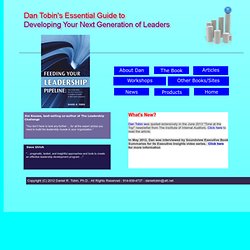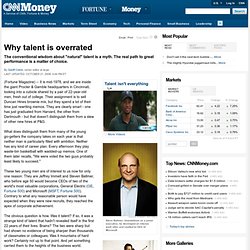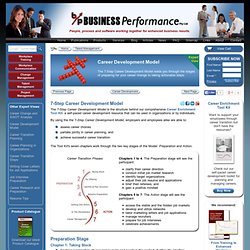

Best website on HRM - Excellent HR Tools and HR Presentation Slides - HR ppt - Human Resource Management. Engaging Students with Engaging Tools (EDUCAUSE Quarterly. Key Takeaways A new course teaching media, mass communication, and political identities in the Middle East and North Africa explored the use of social media in pursuit of effective learning. Using a variety of social media and other tools encouraged student engagement in and out of the classroom. Student responses varied from discomfort with the technology to enthusiastic adoption and continued use after the course ended. This article records my experiences teaching a new course in early 2009 at Dickinson College, a four-year liberal arts college in Pennsylvania serving around 2,300 undergraduates. The course emphasized newer and emerging media and technologies such as satellite television, the Internet, and mobile telephony.
In a class of 21, there was naturally a range of responses to the different technologies used, from enthusiastic embrace through indifference to active resistance. How Struggle Becomes Skill. John Wooden on true success.
The Talent Code. Next Generation of Leaders. Jim Kouzes, best-selling co-author of The Leadership Challenge "You don't have to look any further ... for all the expert advice you need to build the leadership muscle in your organization.

" Dave Ulrich "... pragmatic, tested, and insightful approaches and tools to create an effective leadership development program ... " Dan Tobin's Essential Guide to Developing Your Next Generation of Leaders What's New? Dan Tobin was quoted extensively in the June 2013 "Tone at the Top" newsletter from The Institute of Internal Auditors. In May 2012, Dan was interviewed by Soundview Executive Book Summaries for its Executive Insights video series. Why talent is overrated - Oct. 21, 2008. (Fortune Magazine) -- It is mid-1978, and we are inside the giant Procter & Gamble headquarters in Cincinnati, looking into a cubicle shared by a pair of 22-year-old men, fresh out of college.

Their assignment is to sell Duncan Hines brownie mix, but they spend a lot of their time just rewriting memos. They are clearly smart - one has just graduated from Harvard, the other from Dartmouth - but that doesn't distinguish them from a slew of other new hires at P&G. What does distinguish them from many of the young go-getters the company takes on each year is that neither man is particularly filled with ambition. Neither has any kind of career plan. Every afternoon they play waste-bin basketball with wadded-up memos. These two young men are of interest to us now for only one reason: They are Jeffrey Immelt and Steven Ballmer, who before age 50 would become CEOs of two of the world's most valuable corporations, General Electric (GE, Fortune 500) and Microsoft (MSFT, Fortune 500).
Index to Group Activities, Games, Exercises & Initiatives.
Career Development Model: career planning for career transition. 7-Step Career Development Model The 7-Step Career Development Model is the structure behind our comprehensive Career Enrichment Tool Kit: a self-paced career development resource that can be used in organizations or by individuals.

By using the the 7-Step Career Development Model, employers and employees alike are able to: assess career choices partake jointly in career planning, and achieve successful career transition. Automotivatie si perseverenta - Automotivatie si perseverenta Georgiana Mai 30... The Boy With The Incredible Brain. Beautiful Minds: The Psychology of the Savant. In the field of brain research there is no subject more intriguing than the savant - an individual with mental, behavioral, or even physical disability who possesses acute powers of observation, mathematical aptitude, or artistic talent.

This three-part series provides an enthralling look into the psychology and neuroscience of the savant’s mysterious world. 3-part series, 53 minutes each. Memory Masters: How Savants Store Information. Reudiger Gamm performs complex arithmetic instantly and without help - his brain stores numbers like a calculator. Orlando Sorrel remembers exactly what he was doing on any date, at any hour, and can accurately predict the day of the week thousands of years in the future. Kim Peek - the original Rain Man - has read 12,000 books and hasn’t forgotten a single word. The Einstein Effect: Savants and Creativity. A Little Matter of Gender: Developmental Differences among Savants. Watch the full documentary now (playlist - 2 hours, 38 minutes) What Makes a Genius? Tuckman. Stages of Group Development Often quoted, often misunderstood.

Bruce Tuckman's classic description of the stages of group development is easy to understand and remember, but it helps to go back and look at what's behind each stage. Bruce W Tuckman is a respected educational psychologist who first described the (then) four stages of group development in 1965, soon after leaving Princeton. Looking at the behaviour of small groups in a variety of environments, he recognised the distinct phases they go through, and suggested they need to experience all four stages before they achieve maximum effectiveness.
He refined and developed the model in 1977 (in conjunction with Mary Ann Jensen) with the addition of a fifth stage. Tuckman described the four distinct stages that a group can as it comes together and starts to operate. Stage 1: Forming Stage 2: Storming.